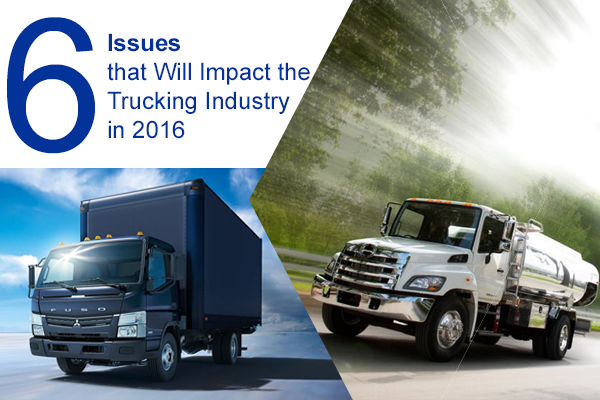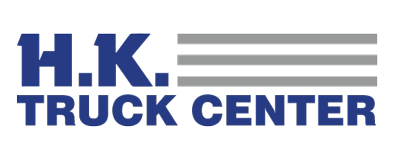
Top 6 Issues that Will Impact the Trucking Industry in 2016
There’s an old statement, “the more things change, the more they stay the same.” That’s very true for the trucking industry.
Many of the same concerns from 2015 will carry to 2016. Be better prepared by reviewing the potential issues that will impact the trucking industry in 2016:
- The economy – When this article came out late last year, the view of the U.S. economy was cautious optimism, based on job growth, housing growth, and lower fuel prices. The article cites macro economist Bill Witte and economist Noel Perry, who both are less optimistic than they were months ago and both expressed concerns over 2017. This was before the Chinese economic turmoil roiling the global economy, so now all bets were off. One thing we can be sure of is that 2016 looks like it may be a bit of a roller coaster.
- Driver shortage – We have talked about this issue constantly and it’s still among the biggest concerns, especially with the pending reinstatement of the 34-hour restart provisions of the HOS rule. New regulations may not only chase experienced drivers out of the industry; they can also reduce the entry of new drivers who find the regulations and time away from family discouraging. Fleets will have to find new ways to attract and retain drivers. They also will have to develop innovative ways to maintain productivity.
- Safety regulations – The ongoing concerns regarding CSA scored aren’t going to disappear any time soon. The transportation industry is dedicated to making the roads as safe as possible for everyone, so the goals are the same for the industry and the government. It’s just how we get there that may differ. However, the advent and growth in the vehicle safety industry will likely help to alleviate many of the biggest safety concerns. These include the mandated electronic stability control (ESC) systems which will take effect in 2017 and the collision-mitigation systems coming on the market.
- Shop options – Although OEMs will continue to offer a wide range of parts and repair services at their dealerships, independent service providers will still play a valuable role. The agreement between the Commercial Vehicle Solutions and the Truck and Engine Manufacturers Association will go into effect, giving independent shops and fleets access to service information for MY 2010 and later trucks. But how much information manufacturers are willing to share and for how much is still a question.
- Data, data, data – Expect a jump in the use of technology as more fleets come to an understanding of how data gathering and analytics can help increase productivity. Whether it’s a way to calculate total cost of ownership, measure driver performance, or provide better customer service, fleets will come to rely on big data to optimize their business. As the article notes, “From driver behavior to maintenance requests, all this information can be used to increase efficiency, lower fuel costs, enhance service offerings, and improve customer service.
- Take the high road – Finally, after years of short-term fixes and uncertainty, Congress finally passed a multi-year highway funding bill. The legislation, the Fixing America’s Surface Transportation Act (FAST), authorizes $305 billion for highway, transit and Amtrak programs over five years, the first transportation bill of any considerable length since 2005. This is something the industry has been pushing for a very long time. It’s well overdue.
Blog Post Obtained from © NationaLease. All rights reserved. For original text, visit www.nationalease.com
Author: Bridget Bradshaw
Bridget Bradshaw is the Marketing Manager for NationaLease and oversees the marketing of NationaLease meetings and events, the NationaLease NEWS, Webinars, and various other projects.

January 22, 2016
No Comments




